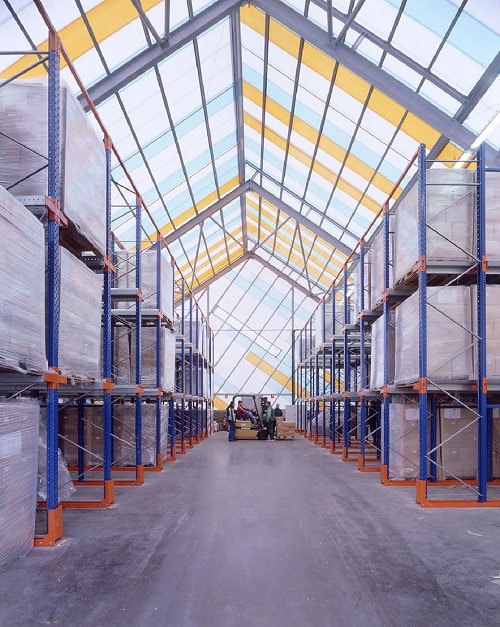For a large swimming pool complex, high winds and cool temperatures outside make thermal efficiency targets that little bit harder to attain. Add in the need to maximize the amount of natural light poolside, and achieving required heat gains presents a challenge. Translucent Danpalon® façade systems are providing building designers with an elegant solution.
Pachuca in Central Mexico is a very windy city and by Mexican standards is also quite cold, with an average temperature of 16ºC throughout the year. When Alberca Universidad Politécnica Metropolitana came to rebuild its swimming pool complex the building’s thermal efficiency was a key design criteria.
 At the same time, the project needed to reuse as much existing infrastructure as was possible. With the swimming pool then largely determining the building’s orientation, façade design played a vital role in maximizing natural light and heat gain on the inside while handling the high winds on the outside.
At the same time, the project needed to reuse as much existing infrastructure as was possible. With the swimming pool then largely determining the building’s orientation, façade design played a vital role in maximizing natural light and heat gain on the inside while handling the high winds on the outside.
The architects, Instituto Hidalguense de la Infraestructura Fisica Educativa (INHIFE) also had to face the challenge of building in sandy soil conditions that offered a relatively low weight resistance. With the weight and movement of the swimming pool being a significant part of the structure’s overall loading, the use of lightweight façade materials was vital. Turning to translucent Danpalon® polycarbonate façade systems, the INHIFE architects found an aesthetically pleasing and technically robust solution capable of meeting the project’s competing demands for light diffusion, thermal insulation, physical strength and low material weight.
A full-height Danpalon® façade constructed using 16mm Ice panels runs the complete length of one side of the swimming pool on a steel frame, while a further Danpalon® façade using a combination of 22mm 3DLite metallic grey and red panels sits at one end of the pool.
INHIFE architect Edgar Baca said, “The fantastic level of light diffusion that these two complementary façades achieve creates a truly unique ambience, with high quality daylight for the interior and a wonderful luminosity for the exterior at night.”
He continued, “Danpalon® has added a huge amount of character to the building thanks to the interaction of material, light and surroundings. At no point does it ever look the same. The hue, texture and appearance depends on where it’s viewed from and the weather conditions. It has given the project real life and personality.”
The new swimming pool complex is a unique wedge-like form composed of gentle slopes, elegant curves and striking lines. A heightened façade wall to increase the natural light diffusion and enable optimization of roof span and pitch was aided by the use of extra long Danpalon® panels, which also avoided the need for horizontal jointing. Panel installation was rapid, taking just a few days from delivery to completion.
Baca added, “Considering the enhanced thermal efficiency the new swimming pool building has attained, and the tremendous functionality it is now providing, this is a project that to date has not once caused us to think that any kind of design adjustment was merited – it really is working to perfection.”

 Polycarbonate Sheets Deliver Superior Strength
Polycarbonate Sheets Deliver Superior Strength Benefits of our facade materials
Benefits of our facade materials

 This is why the use of these panels is going to grow and grow into the future. We are moving into a time where energy efficient materials are going to trump everything. Energy costs are set to rise into the future, so having a structure that is as energy efficient as possible is going to be a top priority of all developers and hence designers. This will save you money in the form of energy costs into the future.
This is why the use of these panels is going to grow and grow into the future. We are moving into a time where energy efficient materials are going to trump everything. Energy costs are set to rise into the future, so having a structure that is as energy efficient as possible is going to be a top priority of all developers and hence designers. This will save you money in the form of energy costs into the future. The climate of our world is ever changing and with that comes the importance of having all aspects of your structure being fool proof when it comes to the various weather conditions that the structure will be exposed to on a daily basis.
The climate of our world is ever changing and with that comes the importance of having all aspects of your structure being fool proof when it comes to the various weather conditions that the structure will be exposed to on a daily basis.